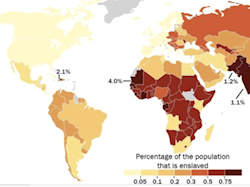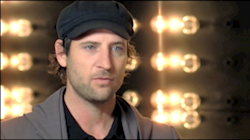The photos in this gallery were taken to illustrate the U.S. State Department's annual report on "Trafficking in Persons," required under the Victims of Trafficking and Violence Protection Act of 2000. This report serves as the primary diplomatic tool through which the U.S. government encourages other countries to help fight forced labor, sexual exploitation and modern-day slavery.
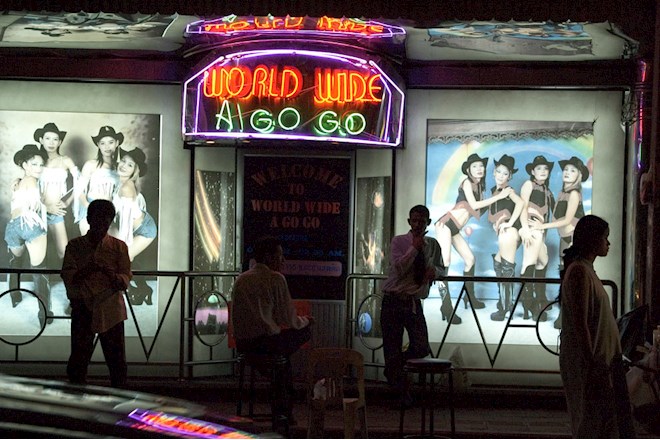
The U.S. Department of State estimates between 600,000 and 800,000 people are trafficked across international borders each year. Millions more are enslaved within national borders. Human trafficking is truly a world-wide phenomenon - paradoxically hidden in the shadows and out in the open for all to see.
©Kay Chernush for the U.S. State Department
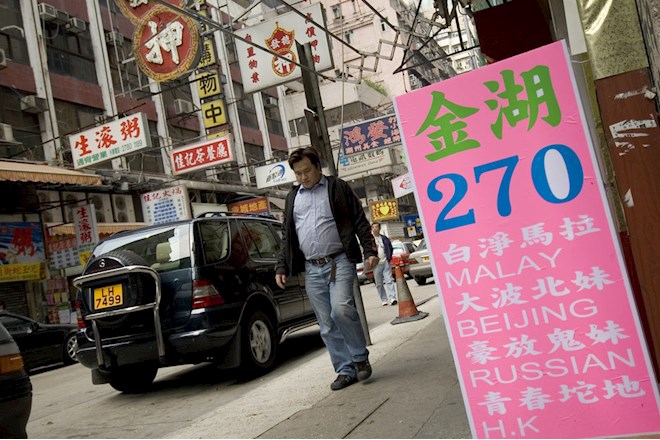
This sign, outside a Hong Kong club, reads: young, fresh Hong Kong girls; white, clean Malaysian girls; Beijing women; luxurious ghost girls from Russia. According to U.S. Government statistics, the majority of victims of human trafficking moved across international borders - about 65% - are trafficked for the purpose of sexual exploitation.
©Kay Chernush for the U.S. State Department
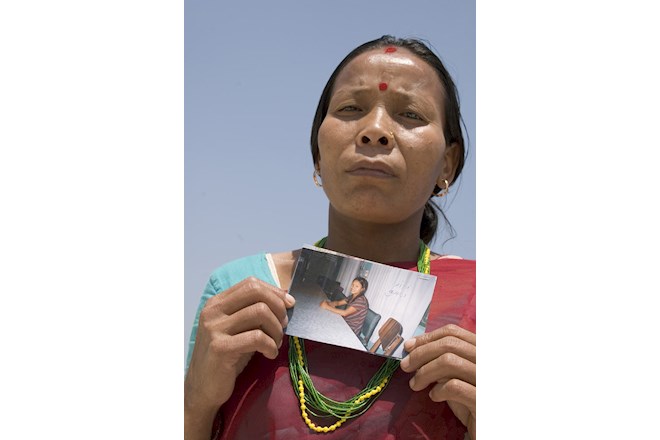
This desperate mother traveled from her village in Nepal to Mumbai, India, hoping to find and rescue her teenage daughter who was trafficked into an Indian brothel. Nepalese girls are prized for their fair skin and are lured with promises of a good job and the chance to improve their lives. "I will stay in Mumbai," said the mother, "Until I find my daughter or die. I am not leaving here without her."
©Kay Chernush for the U.S. State Department
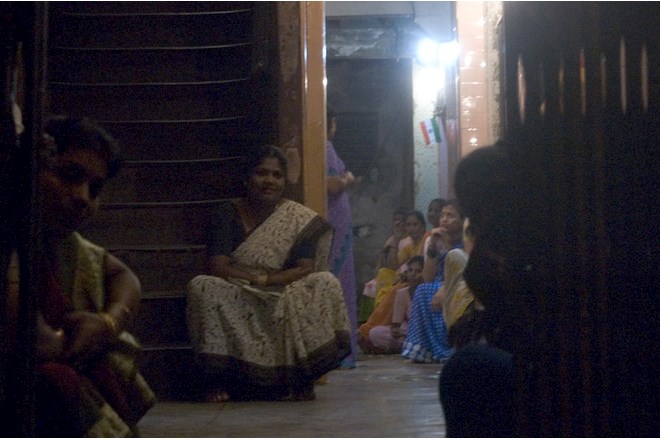
This brothel keeper and her slaves are in a red-light district in Mumbai, India. The women and girls used in prostitution may be exploited 10 to 40 times a night, sometimes keeping as little as 20 rupees (less than 50 cents) per encounter. The Madam takes the biggest cut for herself, then pays the landlord, the pimps and her protectors. Government corruption is one of the driving factors behind the burgeoning trade in human beings.
©Kay Chernush for the U.S. State Department
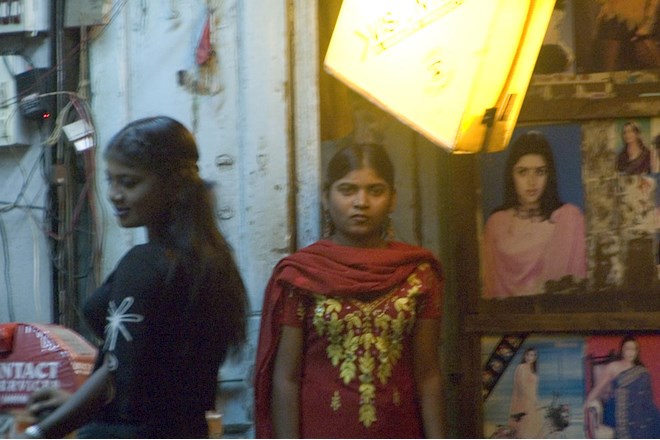
Young women used in prostitution wait for customers/exploiters in Mumbai's red-light district. They face routine violence from pimps and customers and a wide range of diseases and adverse health effects - from sexually-transmitted diseases and tuberculosis, to rape, post-traumatic stress disorder, suicide and murder.
©Kay Chernush for the U.S. State Department
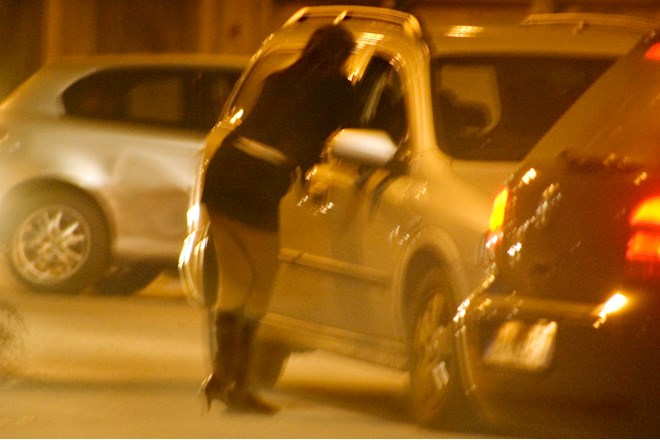
This woman used in prostitution in Western Europe is forced through threats and intimidation to give all earnings to her trafficker. The amount varies between 200 and 400 euros (250-500 USD) per month. These fees come on top of a huge bogus debt typically about 35,000 euros (44,000 U.S.D.) owed by the woman to the trafficker who brought her, usually from Africa or Eastern Europe. Wealthy European countries are magnets for sex trafficking.
©Kay Chernush for the U.S. State Department
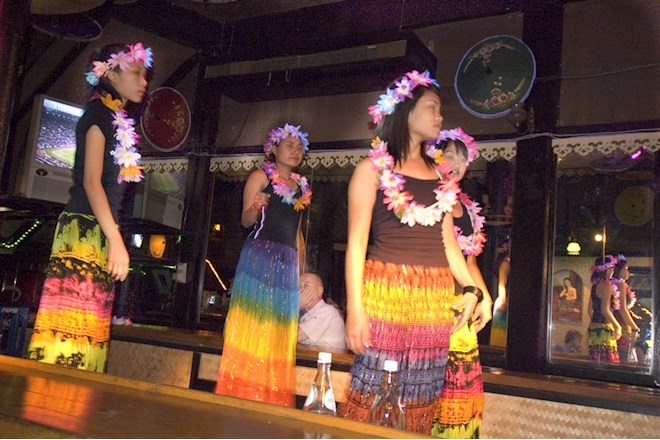
Bar girls, like these young women in Southeast Asia, are typically trafficked from impoverished rural communities and neighboring countries. They are required by the bar's owner or mama-san to entice male patrons to buy drinks for them. If they do not meet their monthly quota, they may be beaten or brutalized. Other girls work in discos and massage parlors where sex is for sale.
©Kay Chernush for the U.S. State Department
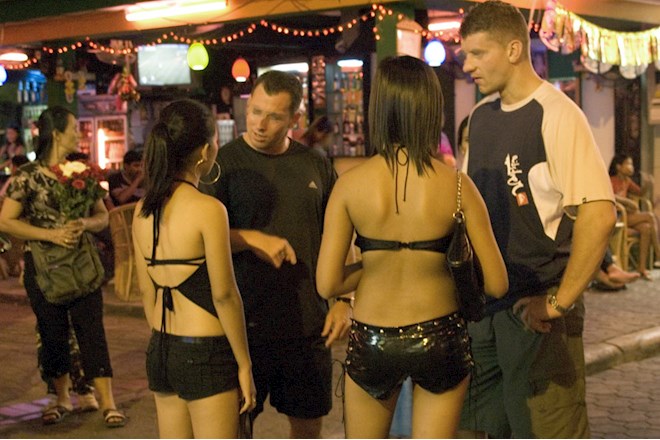
Customers/exploiters come from all over the world. Legalized or tolerated prostitution is a magnet for sex trafficking. The U.S. Government considers prostitution to be inherently demeaning and dehumanizing and opposes efforts to legalize it. The PROTECT Act makes it illegal for an American to sexually abuse a minor in another country. Perpetrators can receive up to 30 years in jail.
©Kay Chernush for the U.S. State Department
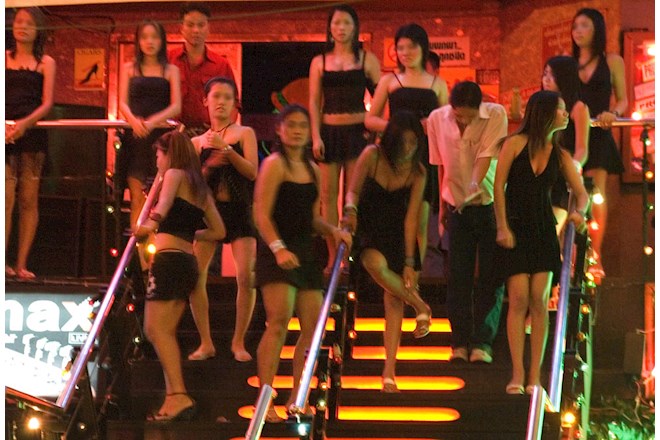
Like slaves on an auction block waiting to be selected, victims of human trafficking have to perform as they are told or risk being beaten. Sex buyers often claim they had no idea that most women and girls abused in prostitution are desperate to escape, or are there as a result of force, fraud or coercion.
©Kay Chernush for the U.S. State Department
of
Topics:
Sex Trafficking






















